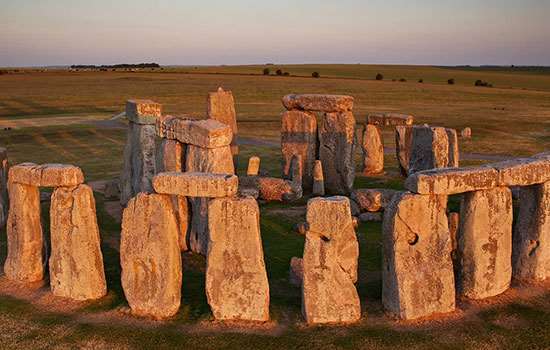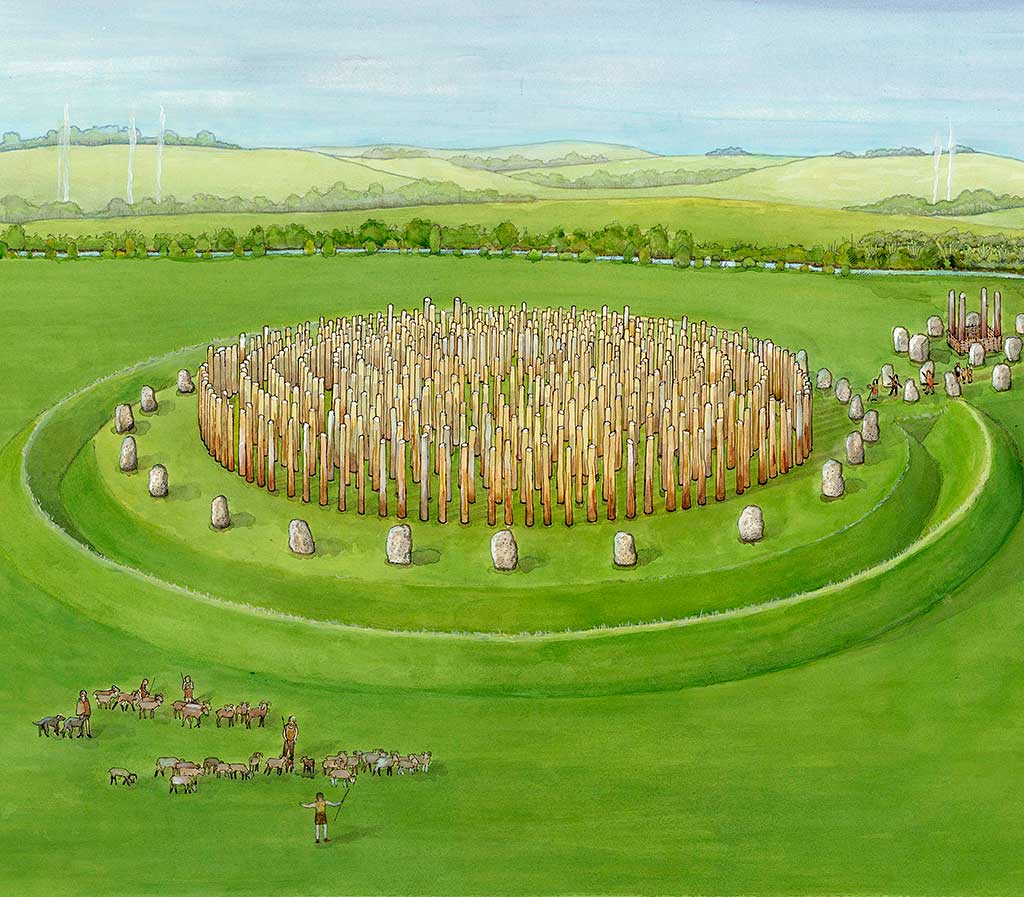The Great Circle
There are three stone circles at Stanton Drew, one large and two small. They have never been excavated, so it is difficult to say exactly how, why and when they were built. However, based on comparison with other stone circles and timber monuments, it is likely that they were constructed as ceremonial monuments around 2500 BC, during the late Neolithic period.
The Great Circle, at 113 metres (370 feet) across, is one of the largest in the country. It has 26 surviving upright stones, although there may once have been many more.
Geophysical surveys, which detect features under the ground, have revealed that the monument would have looked very different 4,500 years ago. Inside the circle were nine concentric rings of wooden posts, each standing several metres tall. Although similar timber circles are known elsewhere, such as Woodhenge, this is the largest and most complex timber monument known in the British Isles.
Surrounding the stones would have been a large and deep circular ditch, 6–7 metres (20–23 feet) wide and about 135 metres (440 feet) in diameter, probably with one or two banks, making it a henge monument. A 50-metre (164-foot) gap on the north-east side formed a wide entrance.
The smaller circles
The other two circles, to the south-west and north-east, are smaller. The remains of the north-east circle, even though it is the smallest of the three, include some of the largest and heaviest blocks of stone, which would have required many people to move.
Within this circle, geophysical surveys have shown that four enormous timber posts once stood in a square.
This is a type of monument built across Britain and Ireland during the late Neolithic period, sometimes called ‘square-in-circle’ or ‘four-poster’ sites. It is not yet understood whether these were buildings, raised platforms or some other form of ceremonial structures.
The three circles stand on the floodplain of the river Chew. Both the Great Circle and the north-east circle were approached by short ‘avenues’ (parallel lines) of standing stones leading down towards the river. Most of these have now fallen.
The Cove
In the garden of the village pub is a group of three large stones called The Cove. Ritual ceremonies probably took place here.
The lumpy and irregular stones are Dolomitic Conglomerate, a coarse-grained rock probably brought here from an area of the Mendip Hills about 3 miles south-west. Similar free-standing coves can be found within the stone circles at Avebury in Wiltshire and once stood at Mount Pleasant Henge in Dorset.
There are several other standing or large stones in the area. To the north, across the river Chew, is the stone known as Hautville’s Quoit, and to the west once stood the Tyning Stones. These stones may have formed part of the monument complex.
Antiquarians and Folklore
The circles were probably first noted by the famous antiquarian John Aubrey in 1664. He recorded that the villagers were breaking stones with sledge-hammers and was told that several had been removed in recent years.
The first detailed map and drawings were made by William Stukeley in 1723. The circles remain very much as he recorded them, although his plan shows the stone circles divided among fields and orchards.
In the absence of many facts about them, the stones have attracted a rich tradition of folklore. Some of the legends around them are explored in the gallery below.
(Illustrations by Jennie Anderson)
Related content
-

Visit Stanton Drew
Plan your visit to the circles and cove and discover other historic places you can visit in the area.
-

History of Avebury
A World Heritage Site, Avebury is one of the largest, and undoubtedly the most complex, of Britain’s surviving Neolithic henge monuments.
-

History of Stonehenge
Read a full history of one of the world’s most famous prehistoric monuments, from its origins about 5,000 years ago to the 21st century.
-

MORE HISTORIES
Delve into our history pages to discover more about our sites, how they have changed over time, and who made them what they are today.










